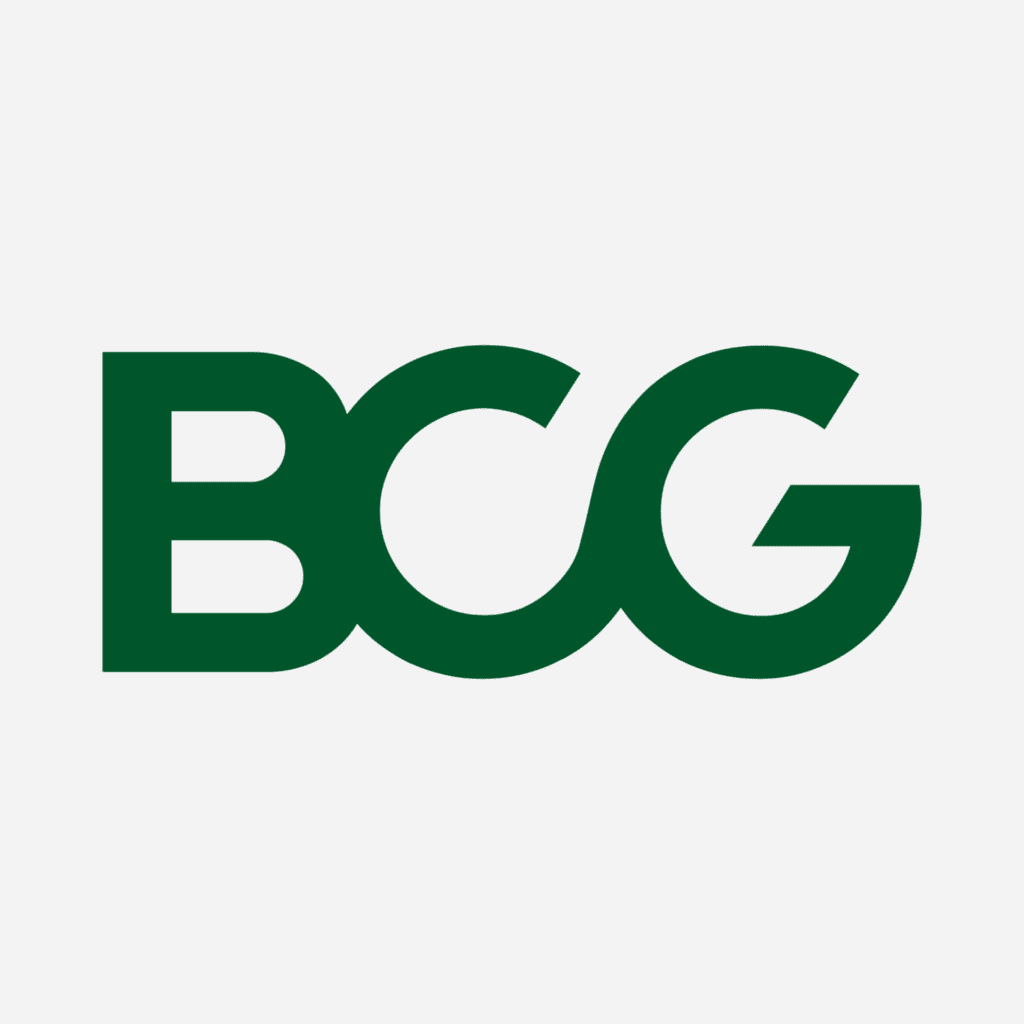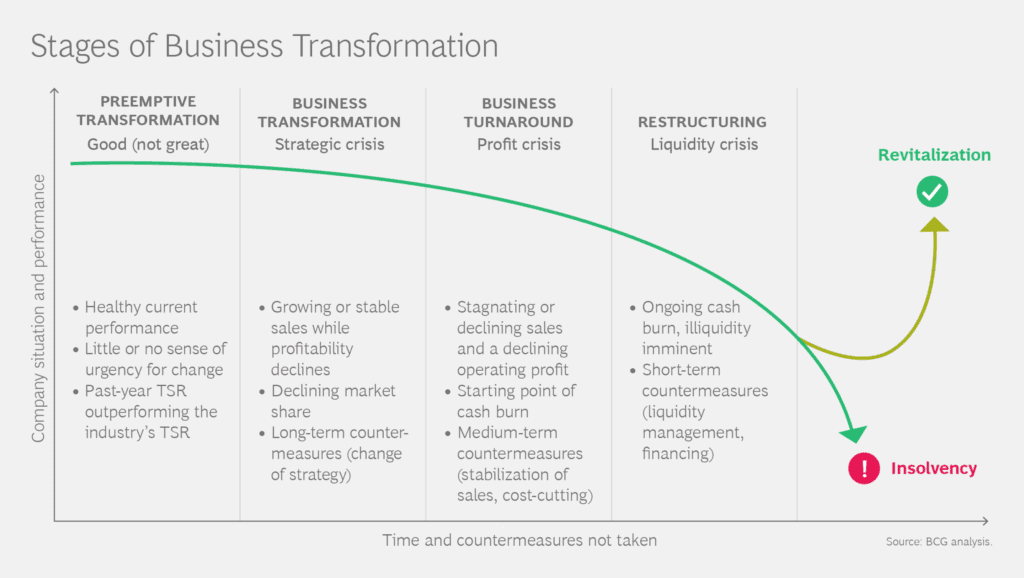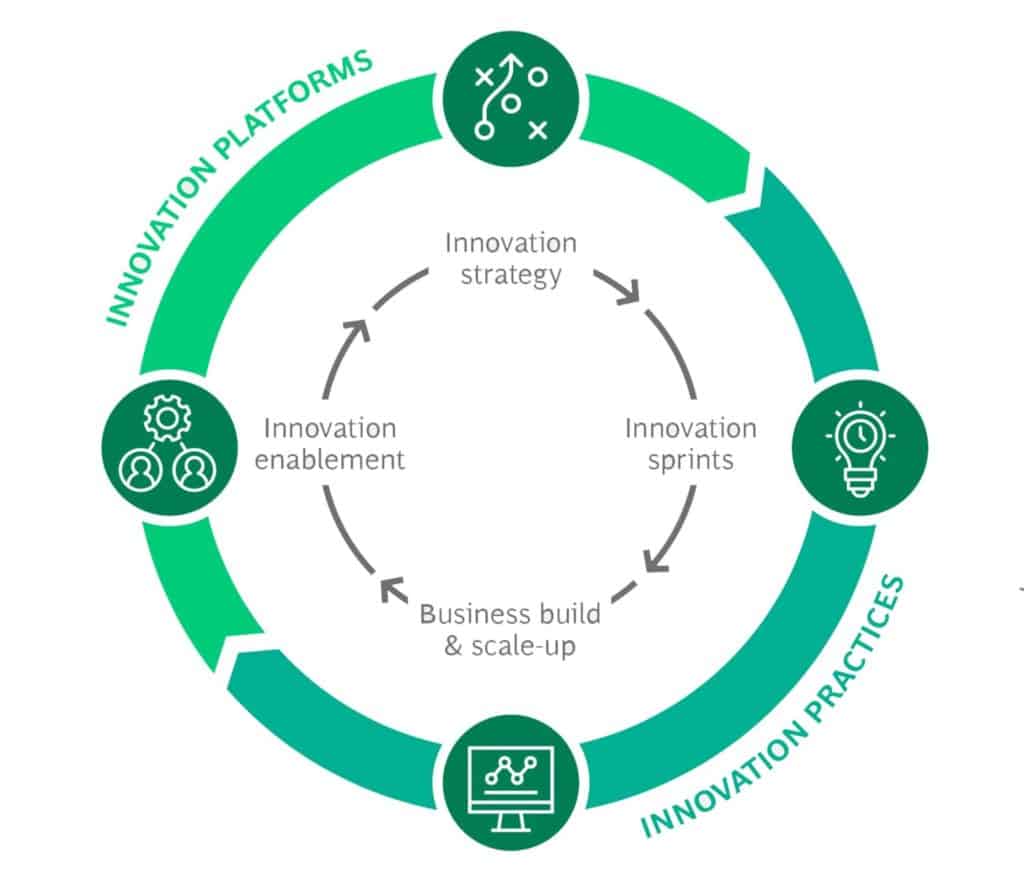
Sixty years after the launch of Boston Consulting Group (BCG), the science-minded management consulting firm remains a leading innovator in the B2B ecosystem.
BCG has been at the forefront of addressing challenges to businesses and organizations in competitive markets within the consulting space. Today, the global consulting firm continues to impress with 25,000 clients across 100 countries and services covering digital transformation, organization purpose, budgeting, innovation strategy, and more.
This profile looks at BCG services and solutions, target markets, industry recognition, and more for potential channel partners and companies to evaluate.
BCG Solutions and Specialties
BCG’s stack of services includes almost 20 core competencies. Below is a condensed look at the list with a deeper dive into where BCG excels most.
- Strategy for businesses, organizations, innovation, and service delivery
- Corporate finance, M&A, transactions, and post-merger integration
- Digital, technology, data, risk management, and compliance
- Diversity, equity, inclusion, and people strategy
- Operations, manufacturing, and international business
- Marketing, sales, and customer insights
- Pricing, revenue, and zero-based budgeting
- Climate change, sustainability, social impact
Read more: Top IT Partners for Enterprise Companies
Building Bionic Companies: Digital, Technology, and Data
A point of emphasis for BCG is preparing clients for the bionic age, a paradigm where people and companies must harness technology to succeed. Through the firm’s Digital, Technology, and Data consulting services, BCG offers end-to-end support for digital transformation, including:
- Strategy and Purpose: Digital strategy roadmap and digital maturity.
- Bionic Outcomes: Digital transformations contributing to personalized CX, sales, and marketing, shared services, supply chain, ecosystems, and innovation strategy.
- Technology and Data Enablers: Artificial intelligence, data analytics, cybersecurity, digital platforms and products, emerging technologies, and metaverse services.
- Human Enablers: Agile-at-scale, digital HR, tech functions, and a Build-Operate-Transfer model.
Together, BCG offers as robust a stack as any in digital consulting services.

Optimizing Organization Strategy & Structure
Organizations must consider their human capabilities and workflows in the transition to becoming a bionic company. As companies and markets change, a purposeful organization design and culture are essential components.
With BCG’s Organization Strategy consulting services, businesses can reduce complexity and evaluate new approaches to managing personnel. Tools like the BCG OrgBuilder offer a platform for customizing and designing organizations, while OrgVantage tests organization models against 12 context levers.
Also read: Best Partner Relationship Management (PRM) Software
Business Changes and Transformations
Beyond organizational structure, businesses must be able to change when necessary, and success in transformation isn’t always a given. The firm’s analysis of hundreds of transformation programs showed that 75% fail, making preemptive action and agile decision-making all the more critical. No matter the company’s market posture, BCG’s Business Transformation consulting services offer expertise in change management, business turnarounds, restructuring, and more.

Revenue and Expense Management
The power of pricing is critical to business prospects, and BCG analyzes every angle of revenue management to drive operational growth. Customer insights, marketing, and sales are crucial to the firm’s approach, backed up by expertise in B2B and B2C pricing, revenue growth management, pricing strategy, and dynamic pricing.

BCG GAMMA and Pricing Catalyst
Spread across 60 locations and 1,500 data scientists and software engineers, BCG GAMMA is the firm’s analytics team committed to implementing AI and machine learning into company workflows. GAMMA evaluates opportunities for using AI across the value chain, including creating proofs-of-concept, minimum viable products (MVP), and improvements after deployment.
Designed by GAMMA, Pricing Catalyst is an AI-based pricing engine combined with BCG’s pricing and change management insights. More product than service, the Pricing Catalyst offers clients a granular pricing plan with the visibility to optimize price-setting and pricing performance.
Zero-Based Budgeting (ZBB)
On the flip side, prospective clients can reimagine the cost basis with BCG’s zero-based budgeting (ZBB) strategy. Defined as giving every dollar a purpose, adopting ZBB is a transformational process in the numbers-minded firm’s eyes. From the bottom up, BCG can help organizations establish governance, monitor performance, and reinvest savings.
Read more: Hyper-Automation Could Dramatically Boost MSSP Profitability
Moving to the Future: Innovation Strategy and Delivery
The BCG Innovation Strategy and Delivery consulting services address the ever-demanding task of honing innovation amidst an evolving ecosystem of businesses and technologies. The Innovation Journey includes a four-element cycle: 1) innovation strategy, 2) innovation sprints, 3) business build and scale-up, and 4) innovation enablement.

Target Markets
BCG lists over 16 industries as potential clientele, including:
- Aerospace and defense
- Education, healthcare, and public sector
- Financial institutions, insurance, principal investors, and private equity
- Oil, gas, power, and utilities
- Retail, consumer products, industrial goods, and automotive
- Technology, media, and telecommunications
- Transportation, travel, tourism, and logistics
Also read: Top Vendor Risk Management (VRM) Software & Tools
Innovation and Research
BCG has a long market, product, and business research history to inform services and the management consulting industry.
Growth-Share Matrix
In the 1970s, BCG created the growth-share matrix to help companies prioritize different business segments within a portfolio. Taught universally in business schools today, the growth-share matrix offers a way of evaluating multiple business segments based on profitability. In turn, portfolio managers and company leadership can strategically allocate resources where optimal.
The four quadrants of the growth-share matrix are:
- Star (High Growth, High Share, Top Left): Ideal for investment.
- Cash Cow (Low Growth, High Share, Bottom Left): Ideal for reinvestment.
- Pet or Dog (Low Growth, Low Share, Bottom Right): Ideal for divestment and liquidation.
- Question Mark (High Growth, Low Share, Top Right): Worth investing or discarding.

Time-Based Competition
Fast forward to 1988, BCG senior advisor George Stalk introduced the concept of time-based competition. First, in an article, followed by the book Competing Against Time: How Time-Based Competition Is Reshaping Global Markets in 1990, Stalk’s theory emphasizes the gravity of time-to-market for product launches and services.
Time-based competition remains a valuable concept within a consistently evolving IT ecosystem in the three decades since. As client demands transform, companies and managed service providers (MSP) must adjust skill sets and services to address client needs.
Latest Insights
Today, featured insights by BCG include published reports on climate change and sustainability, COVID-19, AI, the future of work, executive perspectives, and more. With the BCG Henderson Institute (BHI), industry leaders from the US, Europe, and Asia can take part in:
- Strategy Lab: Identify and develop innovative ideas.
- BCG Fellows: Become a thought leader across BCG’s practices.
- Center for Macroeconomics: Join leading economists to understand trends.
Read more: Four Channel Opportunities for IT Vendors and MSPs
Industry Recognition and Reviews
The Forrester Wave
| Industry Report | When | What |
| Innovation Consulting Services | Q2 2021 | Leader |
| Digital Business Transformation Services | Q4 2020 | Leader |
| Digital Product Development Services | Q2 2020 | Leader |
| Innovation Consulting Services | Q4 2018 | Strong Performer |
IDC MarketScape
| Industry Report | When | What |
| Worldwide Digital Strategy Consulting Services | 2021 | Leader |
| Worldwide Artificial Intelligence Services | 2021 | Leader |
| Worldwide Analysis of Americas Business Consulting | 2020 | Leader |
| Worldwide Business Consulting Services | 2020 | Leader |
| APAC Business Consulting Services | 2019 | Leader |
| EMEA Business Consulting Services | 2019 | Major Player |
Alliances and Ecosystems
Though one of the most respected IT consulting firms, BCG’s ecosystem of alliances with other IT companies pales compared to other top IT partners. That said, the firm’s ten core partners are some of the most notable in the world:
| Adobe | AWS |
| DataRobot | Google Cloud |
| IBM | Meta |
| Microsoft | Salesforce |
| SAP | Wipro |
BCG’s additional partnerships spread across public-private, social sector and sustainability, thought leadership and media, and diversity, equity, and inclusion organizations.
Also read: Top Tech Vendors Powering the Modern Enterprise
BCG Competitors
- Accenture
- ATG Consulting
- Bain & Company
- Deloitte
- EY
- Kearney
- KPMG
- LEK Consulting
- McKinsey & Company
- PwC

BCG: Company Background
In 1963, the Boston Safe Deposit & Trust Company established a consulting division led by Bruce Henderson. With growth, Henderson led an employee stock purchase in 1974, making Boston Consulting Group independent from its banking parent. Shortly before its independence, a potential successor to Henderson, Bill Bain, left BCG to start the competing firm, Bain & Company, in 1973.
Six decades later, BCG is one of the world’s most significant management consulting firms, alongside Bain and McKinsey & Company to form the sector’s Big Three. With headquarters on the Boston Harbor in Massachusetts, the global consulting firm boasts 25,000 employees across over 100 cities in 50 countries in 2022.

Recent Coverage:
- BCG and SAP Partnering on Corporate Sustainability Offering | Datamation
- BCG and the Path to Ethical AI | Datamation
- Tech companies win at digital transformation but struggle with leadership and governance | TechRepublic
- Spinning up the metaverse flywheel requires better hardware and faster connectivity | TechRepublic
- Top 10 Digital Transformation Companies | eWeek
- Google has a time crystal research paper but quantum startups have millions in funding | TechRepublic
- Slack survey: 72% of those dissatisfied with their company’s work location rules will leave | TechRepublic
- Using ERP to Transition to a Digital Enterprise | IT Business Edge
- Digital Transformation Guide | Definition, Types & Strategy | eWeek
- Top 6 IT Challenges in Healthcare | CIO Insight

